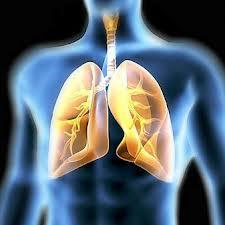 There are about 600 million alveoli in your lungs and if you stretched them out, they would cover an entire tennis court.
The primary functions of our lungs are to transport oxygen from the air we breathe into your bloodstream while taking away carbon dioxide, which is released into the air when we breathe out.
There are about 600 million alveoli in your lungs and if you stretched them out, they would cover an entire tennis court.
The primary functions of our lungs are to transport oxygen from the air we breathe into your bloodstream while taking away carbon dioxide, which is released into the air when we breathe out.
Lungs are located within our chest cavity inside the rib cage and are made of spongy, elastic tissue that stretches and constricts as we breathe.
The airways that bring air into the lungs (the trachea and bronchi) are made of smooth muscle and cartilage allowing the airways to constrict and expand. The lungs and airways bring in fresh, oxygen–enriched air and get rid of waste carbon dioxide made by your cells. They also help in regulating the concentration of hydrogen ion (pH) in blood.
At the bottom of the trachea, or windpipe, there are two large tubes. These tubes are called the main stem bronchi and one heads left into the left lung, while the other heads right into the right lung. Each main stem bronchus–the name for just one of the bronchi–then branches off into tubes or bronchi that get smaller and even smaller still, like branches on a big tree. The tiniest tubes are called bronchioles and there are about 30,000 of them in each lung. Each bronchiole is about the same thickness as a hair. At the end of each bronchiole is a special area that leads into clumps of teeny tiny air sacs called alveoli. There are about 600 million alveoli in your lungs and if you stretched them out, they would cover an entire tennis court. Each alveolus–what we call just one of the alveoli–has a mesh–like covering of very small blood vessels called capillaries (pulmonary capillaries). These capillaries are so tiny that the cells in your blood need to line up single file just to march through them. A muscle at the base of the chest cavity that contracts and relaxes during breathing is known as diaphragm. Intercostal muscles lie along the rib cage that assist breathing. Pleural membranes are thin, membranes that cover the lungs, separate them from other organs and form a fluid–filled chest cavity.
Gaseous exchange in lungs: In humans, respiratory gas exchange is carried out by mechanisms of the heart and lungs. Ventilation is the process of air movement into and out of the lungs. Once air enters the lungs, diffusion of O2 and CO2 occurs in the alveoli. The oxygenated blood is then perfused throughout the body where gas exchange occurs in the capillary beds.